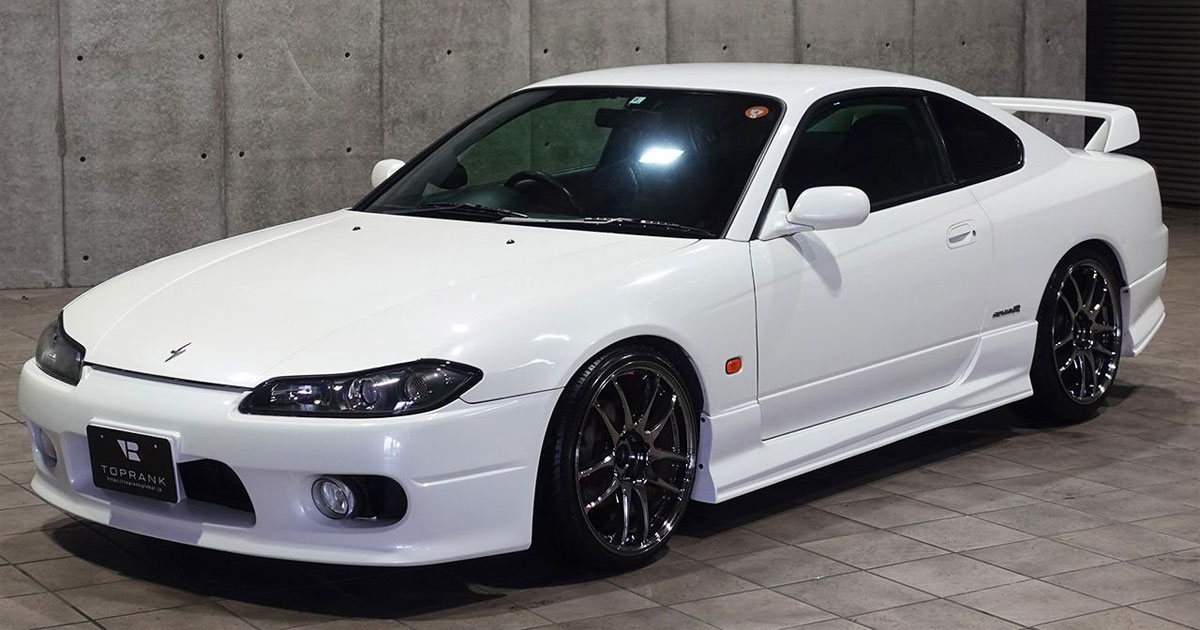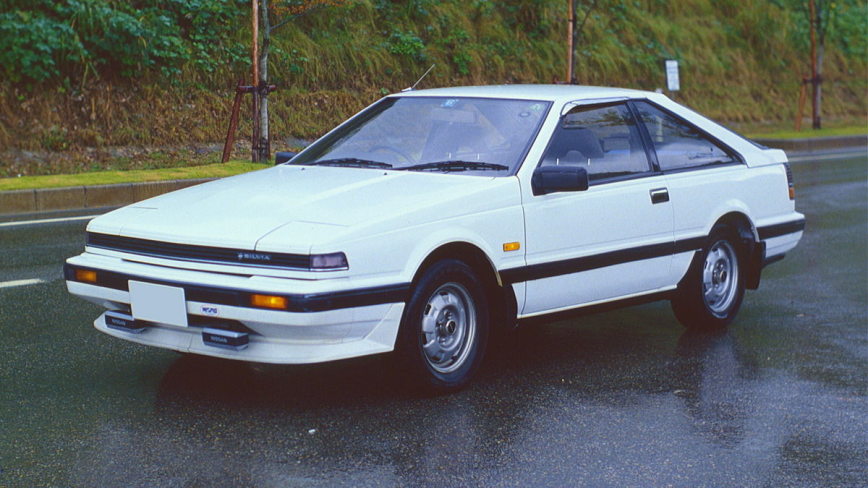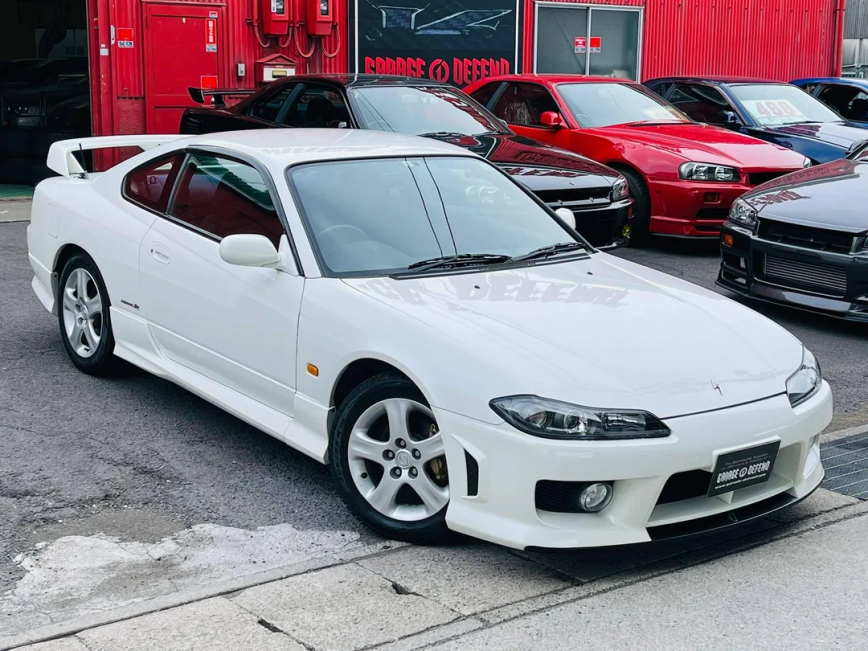Filling the Void Between Z and GT-R, New Nissan Silvia?

With the iconic GT-R on hiatus until the arrival of the R36, Nissan’s lineup of sports cars currently rests on the shoulders of the Z. However, the automotive world buzzes with anticipation as Nissan hints at the potential return of a beloved model, the Silvia. This speculation is not just the usual chatter from Japanese magazines but stems from a genuine statement made by a Nissan official.

Nissan is considering reviving the Silvia to fill the gap between the Z and the GT-R. Ivan Espinosa, Nissan’s Vice President of Global Product Strategy, suggested that the new Silvia could offer robust performance at a competitive price point. Positioned between the $43,000 Z and the $121,000 GT-R, the Silvia is expected to deliver more power than the Z’s 400 horsepower but less than the GT-R’s 565 horsepower.
The Case for the Silvia Revival
Nissan faces a unique challenge in deciding to invest in a new sports car. The market for sports cars is niche, making it difficult to justify the investment with a limited customer base. Espinosa highlighted that for the Silvia to be viable, it would need to be produced in high volumes to cover the investment costs. Despite Nissan’s current focus on electric vehicles, there is still a possibility that a combustion-engine Silvia could hit the market.
In a conversation with Top Gear, Espinosa expressed optimism about the Silvia’s return, mentioning that it could offer “good power at the right price that customers find attractive.” Although he didn’t provide specific details, it is clear that the Silvia would be priced above the $43,000 Z while remaining significantly more affordable than the $121,000 GT-R. The new Silvia would also likely feature more horsepower than the 400 hp twin-turbo 3.0-liter V-6 in the Z but less than the 565 hp twin-turbo 3.8-liter V-6 in the GT-R.
The Challenges and Opportunities
Sports cars, by nature, cater to a niche segment, making it challenging to create a viable business case. For the Silvia to be successful, it would need to be a global product with high production volumes. While Espinosa did not mention potential collaborations with other automakers to spread out costs, the concept is not unprecedented. Collaborations like the Toyota and BMW partnership for the Supra/Z4 and the Toyota and Subaru collaboration for the GR86/BRZ twins have proven successful.
Even though the Silvia’s comeback sounds promising, there is uncertainty about whether it would feature a combustion engine. Earlier this year, Nissan announced that it is no longer investing in internal combustion engines. Meanwhile, domestic rivals like Toyota, Mazda, and Subaru have expressed their long-term commitment to gas engines, which they plan to run on carbon-neutral fuels.
Nissan has historically been slow to update its sports car lineup. The 370Z was on the market for 13 years before the Z arrived, and the GT-R, often referred to as Godzilla, lingered for 17 years. This cautious approach is understandable given the difficulty in recouping investment in niche segments. Espinosa calls the Silvia revival a “far-fetched idea” for now but remains determined to make it happen.
The Risk of Crossovers and Badge Engineering
Launching another crossover is often seen as a safer bet for automakers, usually at the expense of exciting cars aimed at enthusiasts. Let’s hope Nissan doesn’t resort to slapping the Silvia badge on an SUV. This unfortunate trend has happened before with models like the Ford Mustang Mach-E, Ford Puma, Mitsubishi Eclipse, and the recently launched Ford Capri.
Nissan has already toyed with the idea of a Z-badged SUV. The Fairlady X, a Murano/Z mashup created by students at Nissan Gakuen (Nissan Automobile Technical College), thankfully never entered production. Additionally, there was the Nissan Skyline Crossover, a rebadged Infiniti EX launched in Japan in 2009.
A Cheaper Sports Car Alternative
While a new Silvia sounds enticing, launching a more affordable sports car positioned below the Z might make more sense. A lower asking price would attract younger buyers who can’t afford to spend over $40,000 on a new Z. If creating a dedicated model from each Japanese brand is not viable, a collaborative effort among Nissan, Toyota, Subaru, Mazda, Mitsubishi, and Honda to create a badge-engineered car could be a feasible alternative. This would be better than nothing and could appeal to a broader audience.
The success of the Toyobaru collaboration demonstrates that such partnerships can work. The GR86/BRZ twins have been well-received, showing that there is a market for affordable, performance-oriented sports cars. Ideally, a new Silvia would feature a combustion engine, adding to the allure for traditional enthusiasts.
The Legacy of the Silvia
The Nissan Silvia, also known as the 200SX in some markets, holds a special place in the hearts of car enthusiasts. The Silvia’s legacy is built on its reputation for offering excellent performance, sharp handling, and a sleek design at a reasonable price. Its return would not only fill the gap between the Z and the GT-R but also rekindle the excitement for a classic nameplate.

The Silvia’s potential revival brings with it a blend of nostalgia and innovation. Modern technologies, coupled with the classic spirit of the Silvia, could result in a vehicle that appeals to both old-school enthusiasts and new-age drivers.
The prospect of a new Silvia also highlights Nissan’s commitment to its sports car heritage, even as it navigates the shift towards electric vehicles.

Conclusion
The potential return of the Nissan Silvia is more than just a rumor. It represents a strategic move by Nissan to bridge the gap between the Z and the GT-R, offering a performance vehicle that combines power, affordability, and heritage. While there are challenges in reviving a sports car in a niche market, the success of similar collaborations and the enduring legacy of the Silvia provide a solid foundation for its comeback.
Nissan’s cautious approach to updating its sports car lineup reflects the reality of the market, but the enthusiasm and optimism surrounding the Silvia’s return are undeniable. As Nissan continues to explore the feasibility of bringing back the Silvia, car enthusiasts around the world eagerly await the possibility of seeing this iconic nameplate back on the road.
The journey of the Silvia, from its potential revival to its eventual impact on the market, will be one to watch closely. Whether it features a combustion engine or an electric powertrain, the Silvia promises to deliver the thrilling performance and driving experience that have defined its legacy. For now, we can only hope that Nissan takes this opportunity to reignite the passion for sports cars and give us a new Silvia worthy of its name. Photo Credit – Speedhunters (Alec Pender)

